Designers Say This Is the #1 Living Room Mistake Everyone Makes
It's killing your vibe. The post Designers Say This Is the #1 Living Room Mistake Everyone Makes appeared first on Camille Styles.
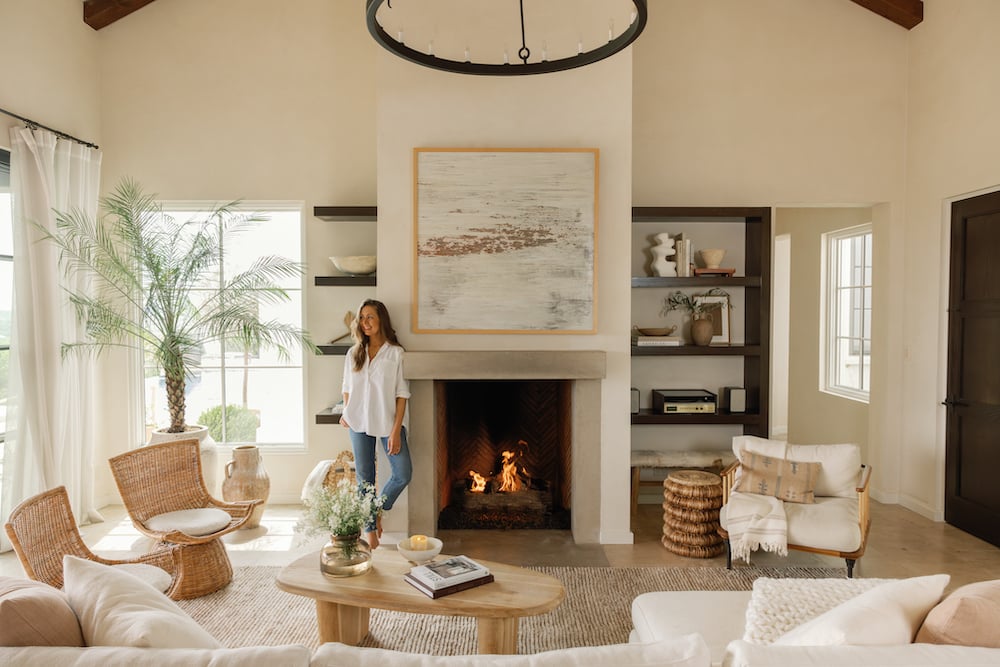
My husband and I used to have an enormous chocolate brown sofa in our living room, with a matching brown chair and ottoman. We were in our early 20s and I was at the very beginning stages of falling in love with interiors. I was clueless about living room layouts and scale. The furniture was cozy, no doubt, but the flow of the space felt cramped and awkward. It was actually one of my first experiences where I realized a room wasn’t working, which further peaked my interest in design. Fast forward a decade later and I still can’t bring myself to own any chocolate brown furnishings, and I’ve learned a thing or two about living room layouts.
Living room layouts don’t have to be complicated, but there are definitely common mistakes that people make (including myself!). Ahead, I chatted with Jennifer Jones, Principal Designer at Niche Interiors and Melanie Bryant of Melanie Bryant Interiors to get their do’s and don’ts on how to layout a living room.
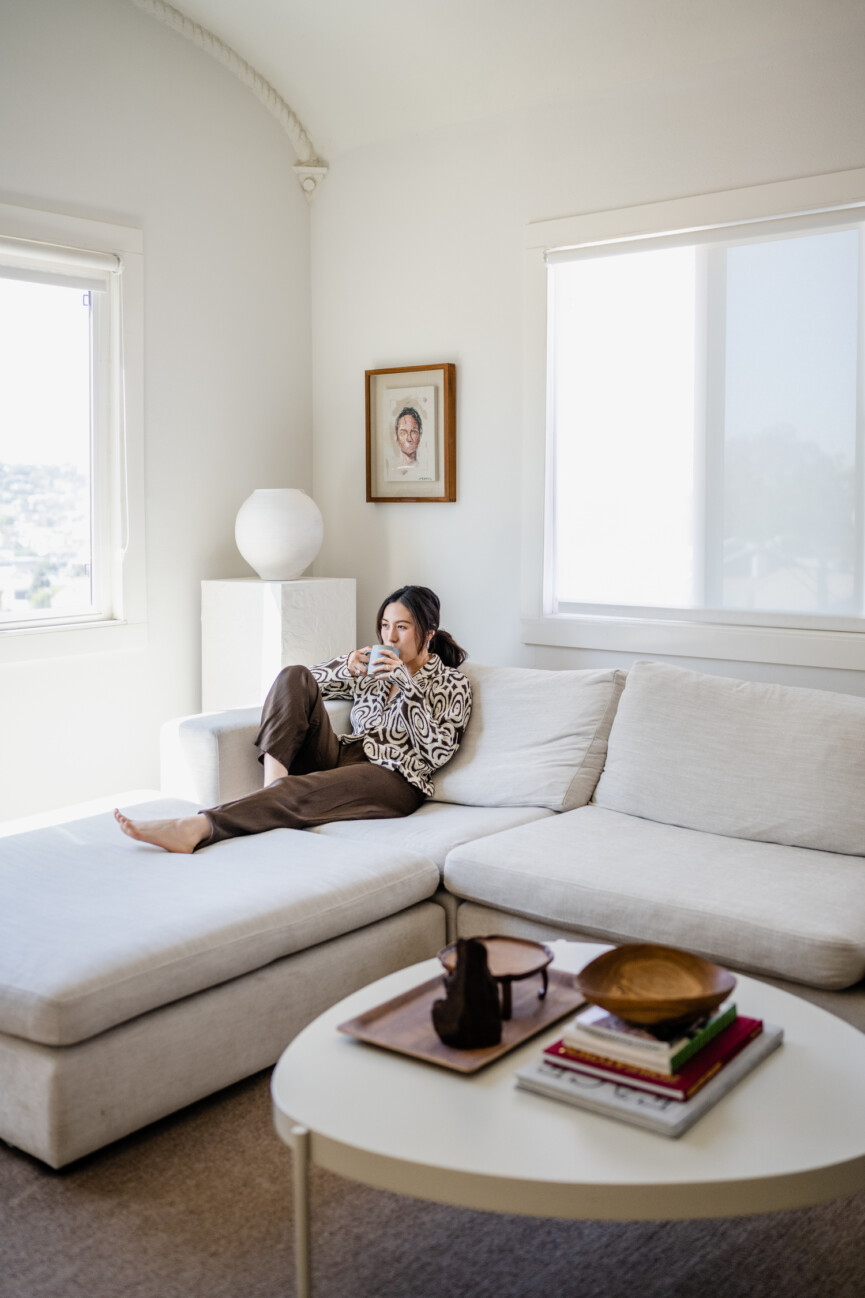
Don’t: Ignore Scale
Starting off strong with my own mistake, ignoring scale. “When the furniture is too big, it overwhelms the room; too small, and everything looks like it’s floating,” Bryant shares. “Scale is everything.”
I used to browse decor and furniture without any plan. I’d simply drop whatever I thought looked pretty in my cart. Now I look at that as a surefire way to guarantee a flurry of returns—which is exactly what happened! I’ve since learned that a tape measure can be a prized possession for anyone who loves design, especially when it comes to scale.
Do: Pick Furniture That Works With Your Space
Measuring your space before making any large purchases is of the utmost importance. You want to be sure your potential furniture will fit. “While there’s no one-size-fits-all formula, a good rule of thumb is to leave 14–18 inches between your sofa and coffee table,” Bryant recommends. “This ensures your pieces fill the space without blocking movement. If the room still feels ‘off,’ it’s usually a scaling issue.”
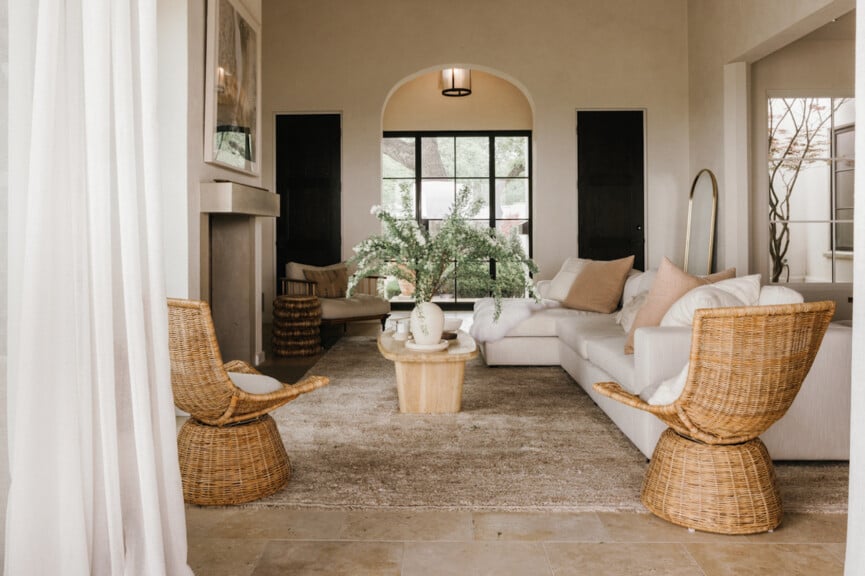
Don’t: Purchase a Rug That’s Too Small
As it turns out, scale isn’t limited to just furniture. “This mistake is a common one: big sofa, tiny rug,” Jones says. There’s nothing more awkward than a beautifully designed living room with a rug that only fits under the coffee table.
Rugs can be a big expense, so it makes sense that homeowners may try to get away with purchasing a rug that’s a little too small. The result? “They actually make the space feel smaller,” Bryant says.
Do: Let Your Rug Take Up Space
When it comes to your living room rug, go big or go home. “An area rug should be large enough for all the seating in a room to sit comfortably on top,” Jones says. Bryant agrees. “Place your furniture where it naturally works and then choose a rug that extends at least under the front legs, if not the entire seating area,” she says. “It grounds the room and makes everything feel more connected.”
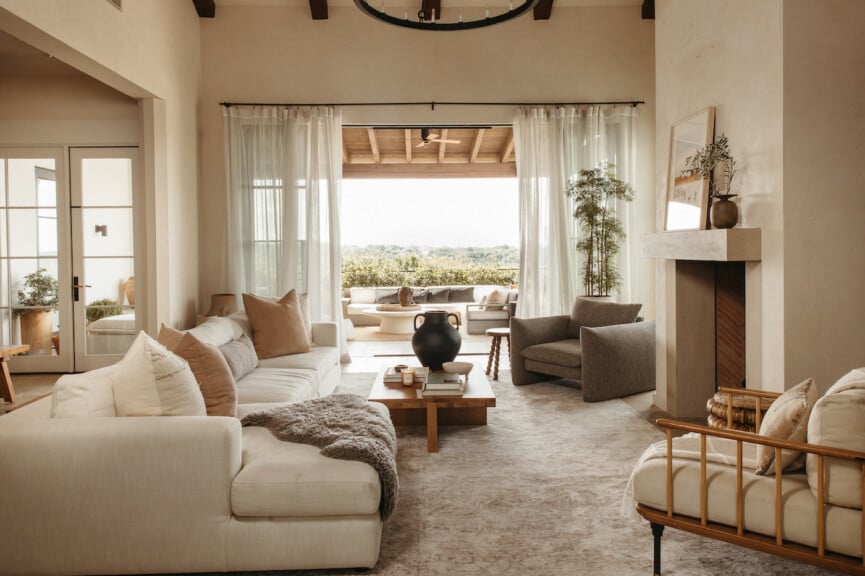
Don’t: Keep Corners Bare
I have an awkward nook in my home office that was bare for a few months when we first moved in. I wasn’t sure what to put there—but couldn’t stop staring at the empty corner. It drove me nuts! The same goes for living room layouts. Empty corners can feel cold, so Jones recommends one thing: “Avoid dead corners!” she exclaims.
Do: Add Plants
“Do you have a sad, empty corner of your living room that you aren’t sure what to do with?” Jones muses. “Instead of adding another furniture piece, consider bringing in greenery in the form of a large houseplant or indoor tree.”
Awkward corners are just cozy spaces waiting to be filled, and this simple mindset shift can open up a world of possibilities. I personally think plants are always an ideal addition to any room, and Jones agrees. “Plants add so much life and interest to a space,” she says.
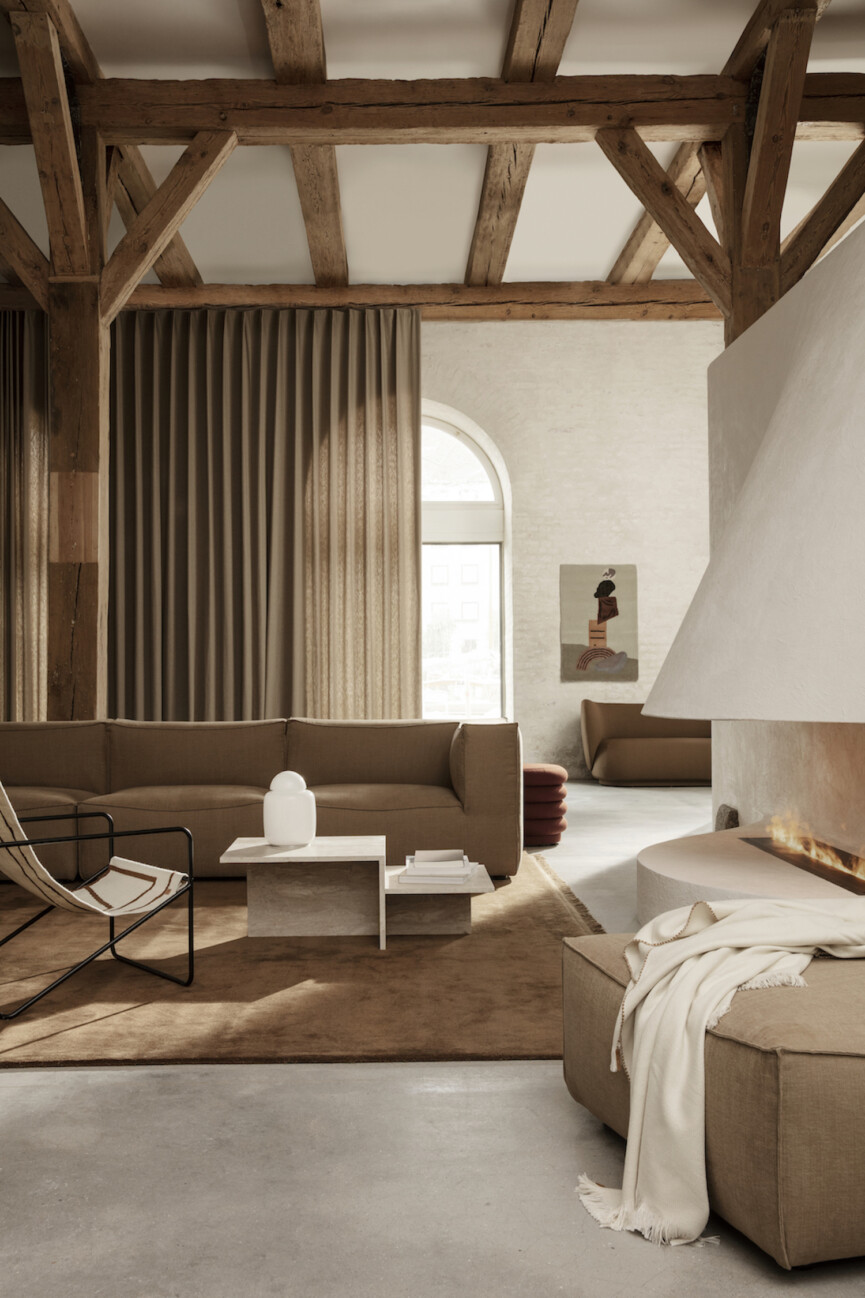
Don’t: Shove All The Furniture Against The Wall
“One of the biggest layout mistakes we see is all the living room furniture shoved against the walls,” Jones says. I must admit, this is a living room layout mistake I’ve made as well!
“Lining every piece of furniture along the walls might seem like it makes the room feel bigger, but it often has the opposite effect,” Bryant says. “It flattens the space and kills the flow.”
Do: Create Space for Conversation
Instead of placing everything against the wall, Bryant suggests placing at least one piece of furniture towards the middle of your living room. “Even in average-sized rooms, floating key pieces like a sofa or a pair of chairs creates a more inviting, layered layout,” she says.
Floating furniture also means priming your space for connection, which is always welcome in a living room. “Create an intimate seating area with all furniture arranged close enough to easily carry on a conversation,” Jones suggests.
“There’s no perfect formula—sometimes you just have to drag things around or sketch it out,” Bryant adds. “But the goal is always balance and breathing room.”
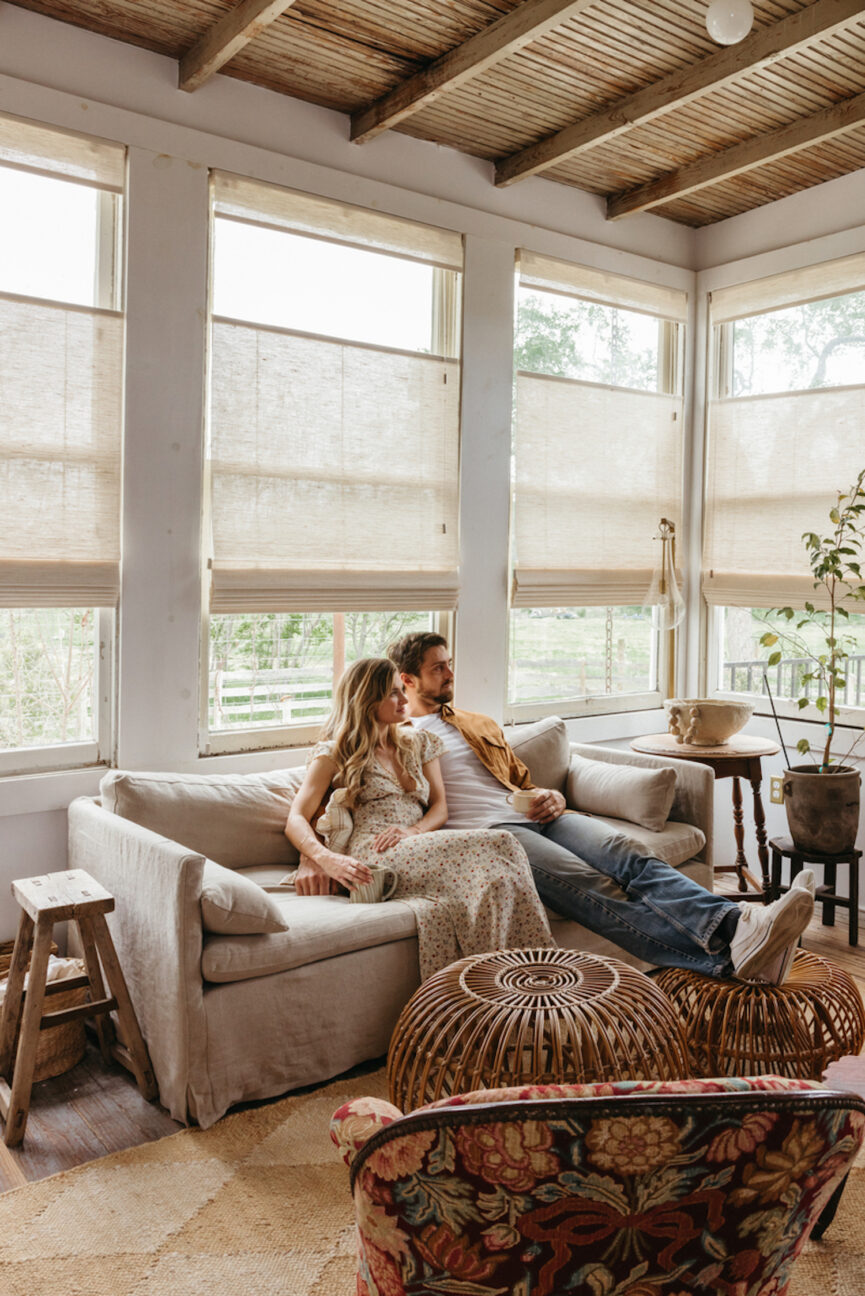
Don’t: Crowd the Space
The flow of a room should always come into consideration when you’re brainstorming living room layout ideas. More isn’t always better. “Always account for circulation and ease of moving throughout your living room,” Jones says. “ Oftentimes, we see too much furniture crowded into a space with no room to navigate, making it awkward for guests.”
Do: Create Pathways
If it’s awkward moving from one seat to the next, or perhaps there’s a coffee table in the way—take that as a sign to create a better path. For extra precision, your tape measure can come in handy. “For main pathways, leave 30-36 inches of space,” Jones recommends. “For smaller areas between armchairs leave at least 24 inches.”
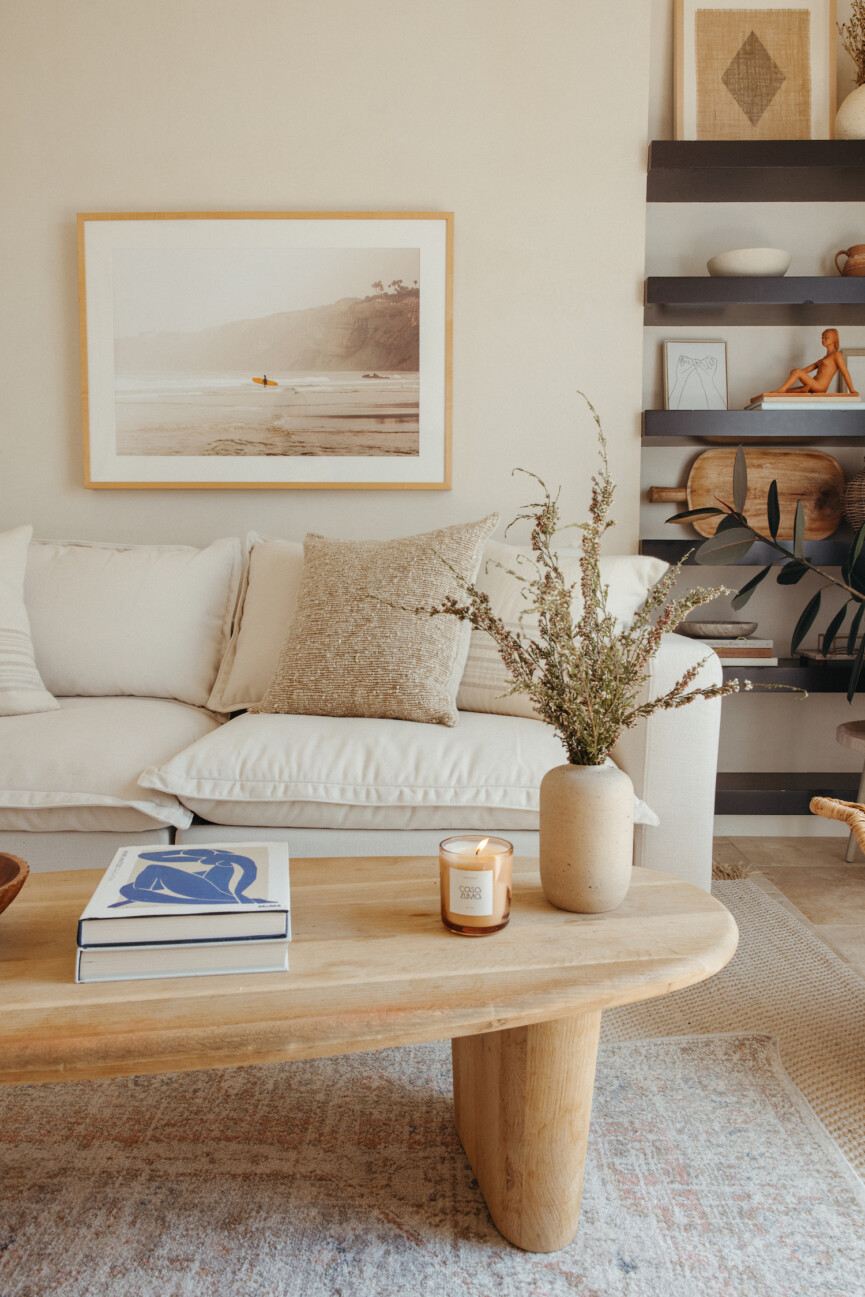
Don’t: Ignore Clutter
Even if you’ve found the perfect living room layout for your home, one thing can ruin the vibe. “Clutter kills a good layout,” Bryant states. “When remotes, blankets, cords, and random knick-knacks are scattered everywhere, even a well-designed room can feel chaotic.”
Do: Utilize Storage
As you put your living room together, consider storage solutions from the very start. Pinpoint the items that need to be stored—blankets, cords and remote controls come to mind. Then work from there. “Use decorative boxes for smaller items, stash blankets in a lidded basket or ottoman, and tape or route cords neatly behind furniture,” Bryant suggests. Cord covers are also miracle workers, especially if you mount your tv on a wall. Clearing the clutter will automatically make your space feel more calm. “A little thoughtfulness goes a long way toward making a room feel polished and pulled together,” Bryant adds.
Your living room should be a space that feels as good as it looks. By making a few thoughtful adjustments, you can create a living room that truly works for your home and your lifestyle. Whether you’re starting from scratch or simply shifting things around, small changes can make a big impact. Happy rearranging!

 Fransebas
Fransebas 































